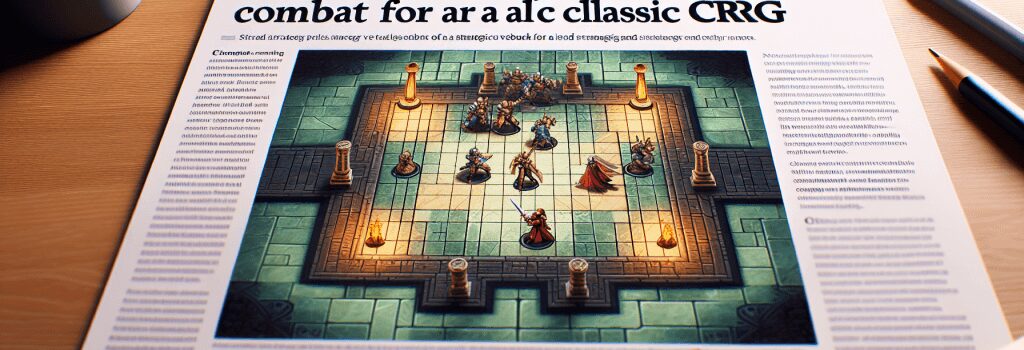Pillars of Eternity Embraces Turn-Based Combat: A Strategic Revamp for a Classic CRPG

In a surprising development that has rekindled interest in classic CRPGs, Obsidian Entertainment has announced that the 10-year-old Pillars of Eternity will soon receive a turn-based combat option. This new feature, revealed quietly in recent patch notes, is positioned as a nod to both longtime fans and those who prefer a more tactical approach to gameplay.
A Shift in Combat Dynamics
For years, Pillars of Eternity has been recognized for its real-time-with-pause combat system. While this design allowed for rapid action and adrenaline-fueled encounters, many players—especially those who favor intricate stat management and careful planning—found themselves yearning for a more deliberate gameplay style. Turn-based combat, long argued for by designer Josh Sawyer, promises to alleviate the information overload inherent in real-time decision making. Players can now analyze afflictions, inspiration effects, and environmental interactions without the pressure of a ticking clock.
Technical Overhaul and Developer Insights
The transition from real-time combat to a turn-based system involves significant technical recalibration. Originally engineered for real-time performance, Pillars of Eternity’s engine wasn’t built with discrete turn cycles in mind. Obsidian’s engineering team must adjust the game’s event scheduling mechanism to incorporate linear time steps, ensuring that every command—from movement to spellcasting—is processed in a carefully determined order.
In a recent interview with Touch Arcade, Josh Sawyer noted that while the turn-based mode was his preferred combat style, the original design choices were largely driven by the expectations of old-school CRPG enthusiasts who backed the projects through crowdfunding. The switch in Pillars of Eternity II: Deadfire after its eight-month run served as a testbed for these ideas, and early feedback indicates that the turn-based version has clarified many of the game’s more opaque systems. This patch promises to apply those lessons to the original title, providing an opportunity to refine gameplay mechanics and reduce the cognitive load on players.
Enhanced Compatibility and System Improvements
In addition to the major combat system overhaul, the 10th anniversary patch brings a range of technical refinements. Mac and Linux gamers, particularly those using Proton on Linux, will notice improved stability and timely bug fixes. The update also ensures that players on GOG and Epic platforms can finally access integrated Kickstarter rewards and achievements seamlessly.
Moreover, the patch includes significant updates to audio and visual effects as well as numerous mechanical and combat-specific tweaks. These improvements are not merely cosmetic; they reflect a broader commitment to modernizing an aging codebase while preserving the game’s classic narrative and world-building strengths.
Community Engagement and Future Prospects
Obsidian’s announcement has been met with enthusiastic reactions across gaming forums and on social media. The developer has invited dedicated fans—referred to as Watchers—to participate in the testing phase of the turn-based combat mode. Those interested are advised to keep an eye on Obsidian’s official social media channels and Discord server for upcoming sign-up details.
This revamp is more than a simple patch update; it is an opportunity to bring new life to a beloved title and potentially lure back players who may have been put off by its original combat mechanics. The development team appears poised to strike a balance between technical enhancement and fan service, ensuring that the game’s legacy continues to evolve while staying true to its roots.
Technical Deep Dive: Combat Mechanics Redefined
From a systems architecture standpoint, converting a real-time engine into a turn-based framework requires handling numerous edge cases. For instance, developers must manage state transitions that ensure animations, particle effects, and sound cues synchronize perfectly with turn endpoints. Additionally, balancing enemy AI during pre-calculated turn-based phases demands recalibration of reaction times, damage output, and positional strategy. These technical challenges not only refine gameplay but also provide a robust platform for future expansions and mods.
Expert Opinions and Industry Impact
- Design Efficiency: Industry experts emphasize that turn-based design allows for deeper strategic layering. By decoupling player input from instantaneous enemy reactions, designers can integrate complex status effects and combo interactions with better clarity.
- User Accessibility: Turning the system on its head may serve as a crucial accessibility enhancement for gamers who struggle with the rapid pace and coordination required in real-time settings.
- Competitive Landscape: With titles like Baldur’s Gate 3 popularizing robust real-time combat variants, Obsidian’s move could spark broader trends in digital CRPG development, encouraging a hybrid model that caters to both tactical enthusiasts and action-oriented players.
These expert insights highlight the importance of re-evaluating legacy systems in the light of modern gaming demands, proving that even classic titles can be reimagined for today’s diverse player base.
Conclusion
With the upcoming turn-based patch, Pillars of Eternity is set to reforge its identity and potentially expand its appeal. By addressing outdated combat paradigms with innovative, tactically oriented solutions, Obsidian Entertainment not only honors its legacy but also pioneers a path for future CRPG advancements. As fans eagerly await the beta rollout, this update underscores the evolving interplay between traditional game design and emerging gameplay philosophies.